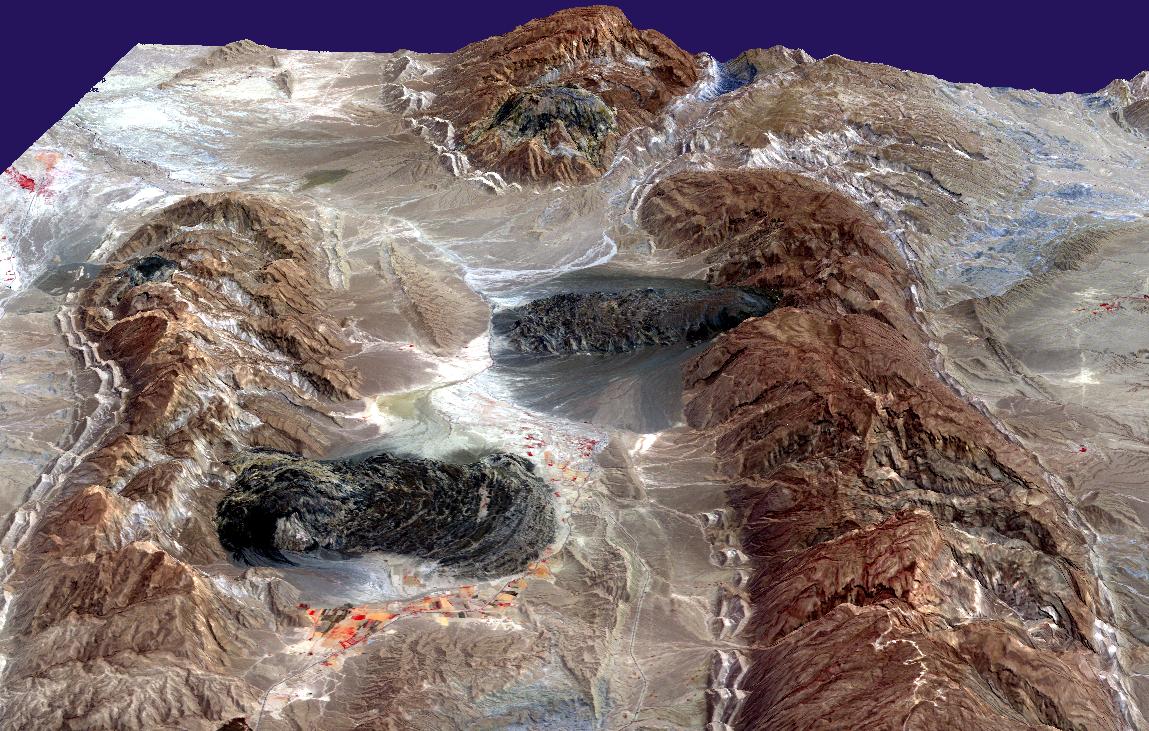What Caused Iran's Deadly Earthquake?


Crashing continents caused today's (April 9) deadly earthquake in Iran, which killed dozens, according to news reports.
The magnitude-6.3 Iran earthquake hit in the southern Zagros Mountains, a stunning range that marks the boundary between the Arabian and Eurasian tectonic plates, said Bill Barnhart, a research geophysicist at the U.S. Geological Survey's (USGS) Denver office. The Arabian plate is grinding northward at about 0.4 inches (10 millimeters) a year, pushing the boot-shaped Arabian peninsula into the Eurasian plate, which covers most of Europe and Asia.
Just like the Himalaya Mountains, whose grand height and complex tectonics reflect the impact between the Indian and Eurasian plates, the Zagros Mountains are a mix of different earthquake fault styles, Barnhart told OurAmazingPlanet.
Today’s quake was a thrust fault earthquake, meaning the ground on one side of the fault moved vertically up and over the other side, shortening the distance between the two sides. The epicenter was 55 miles (89 kilometers) southeast of Bushehr, the city where Iran's only nuclear power station is located. The quake originated 6.2 miles (10 km) below the Earth's surface and struck at 4:22 p.m. local time (7:52 a.m. EDT), the USGS reported.
The magnitude-6.3 earthquake was not unusual for southwestern Iran.Thanks to the region's long historical record, scientists know temblors along the plate boundary typically range from magnitude 5.5 to 6.3, Barnhart said. And small earthquakes ranging from magnitude 4 to magnitude 5 frequently shake the region. "Earthquakes are very, very common here," he said. [Video: What Does Earthquake Magnitude Mean?]
But poor construction means these magnitude 6 quakes are often very destructive. "When these moderate earthquakes happen close to cities, they're not prepared for this level of shaking. That's why Bam was so destructive and deadly," Barnhart said, referring to the huge earthquake that struck the historic city in 2003.
In 2003, some 26,000 people were killed by a 6.6 magnitude quake that flattened Bam, located about 400 miles (650 km) east of today's earthquake. The Bam earthquake was a strike-slip, meaning the ground on either side of the faults moved mostly horizontally, as California's San Andreas fault does.
Get the world’s most fascinating discoveries delivered straight to your inbox.
The Zagros Mountains are known for their unusual rock formations, including ancient salt layers that formed in the Precambrian Era, before complex life appeared in Earth's fossil record. As the tectonic plates have slammed into each other, contorting the mountains, the salt layers have pushed to the surface like toothpaste from a tube, forming salt domes and salt glaciers called namakiers.
Email Becky Oskin or follow her @beckyoskin. Follow us @OAPlanet, Facebook or Google+. Original article on LiveScience's OurAmazingPlanet.




